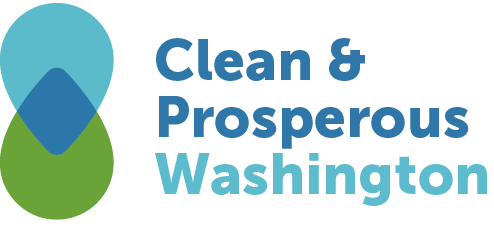Washington State’s Climate Commitment Act – A Primer
The Act in Brief:
The Climate Commitment Act (Senate Bill 5126) is designed to deliver certain emissions reduction and achieve co-benefits that foster a more prosperous, equitable, and resilient Washington State. In 2020, Washington State legislated limits on greenhouse gases (GHGs) emitted in the state to align with the best scientific guidance. The limits are 45% below 1990 levels by 2030 (roughly 50% below pre-pandemic emissions levels), 70% below 1990 levels by 2040, and 95% below 1990 levels by 2050.
In order to meet these limits, Washington state is implementing a newly established, comprehensive cap & invest system called the Climate Commitment Act through which emissions are required to decrease starting in 2023 and unprecedented investments are unlocked to accelerate an equitable transition to net-zero emissions by 2050. Washington is now the only state to have a system in place with long-term authority to achieve net-zero GHG emissions by 2050.
Washington’s Climate Commitment Act embodies three overarching commitments:
Equitable Climate Action: Climate change and air pollution are proven causes of major inequities experienced by communities of color and Tribal Nations. The Climate Commitment Act integrates biennial environmental justice review with the HEAL Act (Senate Bill 5141) to ensure design and implementation are done with robust community input. For the first time, this program dedicates revenue to help relocate tribal communities threatened by sea-level rise. Near-term investments will deploy comprehensive air quality monitoring networks by 2023. The Climate Commitment act directs air agencies to adopt new emissions standards for criteria pollutants and mandates a minimum of 35% of investments specifically to communities overburdened by air pollution with up to an additional 10% for Tribal Nation supported projects.
Large Emitter Responsibility: Large emitters, emitting nearly 75% of the state’s current GHGs, are legally obligated to comply with the emissions reduction targets of the Climate Commitment Act. This includes nearly 75% of Washington state’s current emissions. Compliance is enforced, with failure to comply is subject to significant penalties. Large emitters comply predominantly by purchasing from a limited and declining supply of emissions allowances, with revenue generated for investments to accelerate the shift away from greenhouse gas pollution, boost climate resilience, and achieve other priority co-benefits. Business competition to reduce emissions at the lowest possible costs incentivizes innovation. Manufacturing businesses uniquely at risk due to being “emissions-intensive and trade-exposed” are given fair treatment to prevent likely increases in global emissions and loss of economic livelihoods, while being required to initiate the shift to deep emissions reduction.
Ambitious, Long-term Impact: The Climate Commitment Act takes lessons from similar programs elsewhere and substantially improves on them, serving as a template for other regions seeking an economically beneficial and equitable approach to meeting their emissions limits. This includes a steeper rate of decline in emissions, certainty in delivering local air quality improvements, and enhanced commitments to frontline communities. As a cap & invest program, the Climate Commitment Act not only caps and reduces emissions, but also invests in the transition to a thriving, globally-competitive clean energy economy, with mechanisms built in to heal inequities in pollution exposure, participation, and health impacts. The Climate Commitment Act integrates with an array of climate-jobs-and health centric policies passed by the legislature, including the Clean Energy Transformation Act (CETA) program to achieve a zero emissions power sector and a new Clean Fuels Standard that unifies the Pacific West Coast.
Key Elements in Brief
There are five key elements to Climate Commitment Act’s (The Act) Cap & Invest system:
- Cap: Across all major sectors of the economy, covering nearly 75% of statewide greenhouse gas emissions;
- Reduce: Drive towards emission limits with certainty, including roughly halving of annual, statewide emissions between 2019 and 2030;
- Heal: Leverages the HEAL Act (SB 5141) and other specific mechanisms to embed and enhance overburdened community voices and promote measurable outcomes;
- Invest: Directs billions of dollars to benefit residents, with near-term deployment of air quality monitoring networks and over $5 billion dedicated to transportation system emissions reduction;
- Comply: With strong enforcement provision, large emitters collectively meet the cap with well-designed mechanisms to ensure the integrity of the emissions cap is sustained in a cost-effective manner.


